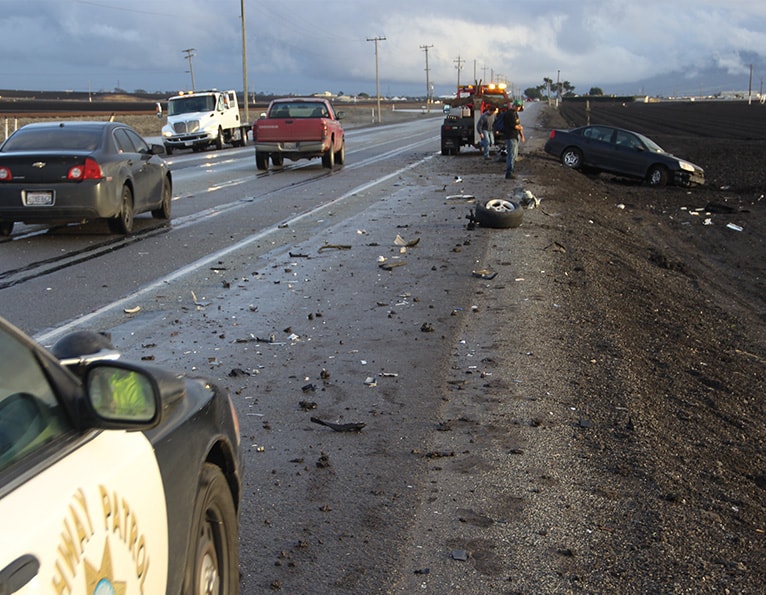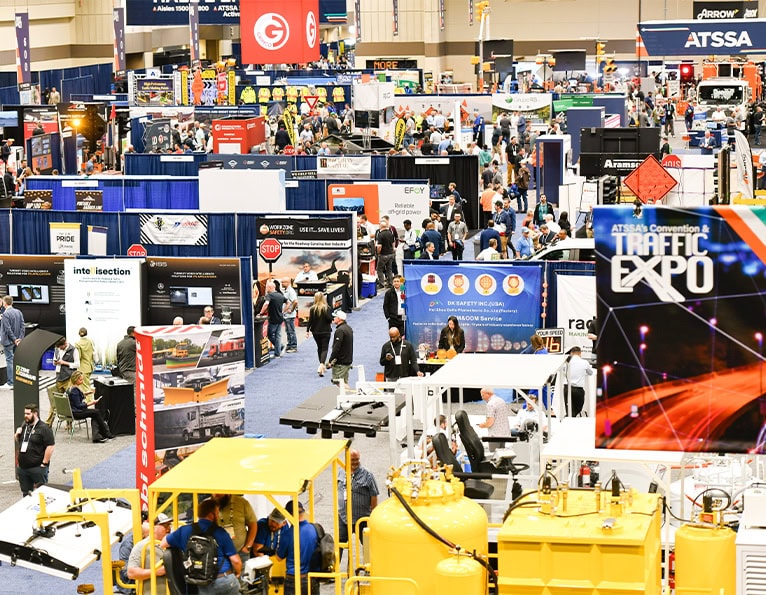Latest updates
Final ‘Buy America’ guideline published, starting 60-day clock to enactment
The Office of Management and Budget OMB on Wednesday published the final guideline for the Build America, Buy America Act, starting a 60-day countdown to its enactment. Included in the Infrastructure Investment and Jobs Act IIJA, this expansion of the Buy America program led to the inclusion of a number of materials and products used and manufactured by ATSSA members. ATSSA’s Government Relations Team provides a summary of the most important sections of the 162-page guidance and will continue to update ATSSA members as more information becomes available. ATSSA also will be holding a virtual town hall on this topic on Sept. 7. The Office of Management and Budget OMB on Wednesday published the final guideline for the Build America, Buy America Act, starting a 60-day countdown to its enactment. Included in the Infrastructure Investment and Jobs Act IIJA, this expansion of the Buy America program led to the inclusion of a number of materials and products used and manufactured by ATSSA members. Below, ATSSA’s Government Relations Team provides a summary of the most important sections of the 162-page guidance and will continue to update ATSSA members as more information becomes available. ATSSA also will be holding a virtual town hall on this topic on Sept. 7 at 2 p.m. Registration is now open. Please contact ATSSA Director of Federal Government Relations Cameron Greene Cameron.greene@atssa.com with any questions and concerns about this topic. Office of Management and Budget On Aug. 23, OMB published revised Build America, Buy America BABA guidance related to provisions in IIJA by adding a new part 184 to 2 C.F.R. This OMB document “is intended to be high-level coordinating guidance for Federal agencies to use in their own direct implementation of BABA” requirements included in the IIJA and is an update of initial OMB BABA guidance issued in April of 2022 Memorandum M-22-11 that can be found here. OMB will be updating Memorandum M-22-11 with a new Memorandum within 60 days of the publication of the final OMB guidance. The IIJA included many changes to Buy America policies and expanded the application of these requirements to construction materials and certain manufactured products. The recently released OMB Buy America final guidance can be found here. In addition, OMB released a summary of the final guidance that can be found here. While OMB has stated this is “final guidance,” the document clearly states that “OMB may also issue additional guidance in the future as it receives additional stakeholder feedback from Federal agencies, recipients of Federal awards, contractors, manufacturers, labor organizations, suppliers, industry associations, and others on today’s guidance.” The effective date for the revised guidance is Oct. 23. Following are several provisions from the newly released OMB final guidance that may be of interest. Clarification of Buy America categories – The OMB final guidance states: “An article, material, or supply should only be classified into one of the following categories: 1 iron or steel products; 2 manufactured products; 3 construction materials; or 4 section 70917c materials.” Section 70917c materials are cement, cementitious materials, aggregates such as stone, sand, or gravel, or aggregate binding agents or additives. The revised guidance further explains that an “article, material, or supply should not be considered to fall into multiple categories.” The guidance also notes that, in “some cases, an article, material, or supply may not fall under any of the above-listed categories” – such as temporary items. See below. Temporary item clarification – OMB has clarified that Buy America requirements apply only to products that are permanently incorporated into a project or are an integral part of the infrastructure. Buy America requirements do not apply to items temporarily brought to the construction site or that are not permanent fixtures. OMB replaced the phrase “used in the project” from Memorandum M-22-11 with “incorporated into the project” in the final guidance. In addition, the final guidance states: “On the issue of permanent incorporation, Memorandum M-22-11 explained that the Buy America preference only applies to articles, materials, and supplies that are consumed in, incorporated into, or affixed to an infrastructure project. As such, it does not apply to tools, equipment, and supplies, such as temporary scaffolding, brought to the construction site and removed at or before the completion of the infrastructure project. Nor does a Buy America preference apply to equipment and furnishings, such as movable chairs, desks, and portable computer equipment, that are used at or within the finished infrastructure project but are not an integral part of the structure or permanently affixed to the infrastructure project. This policy is not modified by the revised guidance issued today in part 184.” Construction materials definition – The final guidance includes a definition of the term construction materials. Specifically, the final guidance states: “Construction materials means articles, materials, or supplies that consist of only one of the items listed in paragraph 1 of this definition, except as provided in paragraph 2. To the extent one of the items listed in paragraph 1 contains as inputs other items listed in paragraph 1, it is nonetheless a construction material. The listed items are: i Non-ferrous metals; ii Plastic and polymer-based products including polyvinylchloride, composite building materials, and polymers used in fiber optic cables; iii Glass including optic glass; iv Fiber optic cable including drop cable; v Optical fiber; vi Lumber; vii Engineered wood; and viii Drywall. Minor additions of articles, materials, supplies, or binding agents to a construction material do not change the categorization of the construction material.” The final guidance also makes clear that OMB may further revise the list of covered construction materials by stating: “In future revisions of part 184, OMB may consider adding new items to its list of construction materials or revising the definition in other ways consistent with BABA.” Section 70917c materials – Consistent with the IIJA, the OMB final guidance states that the term “construction materials” does not include section 70917c materials “cement and cementitious materials, aggregates such as stone, sand, or gravel, or aggregate binding agents or additives”. The final guidance does not, however, exempt these types of materials from Buy America requirements as manufactured products in certain situations. Glass beads – With regard to glass beads and whether they are considered a construction material, the OMB final guidance states: “In reaching its final list of construction materials for the revised guidance, OMB used the list provided by Congress in its Findings in section” of the BABA provisions of the IIJA. OMB notes that Congress specifically identified “glass” in section 70911 [of the IIJA], “Findings,” as one of several “common construction materials.” While OMB believes that this list is not exhaustive, OMB includes all items in the Findings section as listed construction materials. Thus, OMB has included glass in the revised guidance as a “construction material.” “OMB has not included a separate category for optic glass in the revised guidance. The general principles that apply throughout the revised guidance should be used to determine how to treat glass products such as recycled glass and glass beads. Federal agencies may decide to provide additional guidance on those topics for products that are used on infrastructure projects they provide funding for. If stakeholders believe that waivers are justified in the public interest or for other reasons in relation to glass, the waiver process would be the appropriate mechanism to address concerns related to this topic.” Treatment of raw materials – OMB did provide some clarity as it relates to raw materials and application of the Buy America requirements. Specifically, the final guidance states: “Raw materials may include unprocessed or minimally-processed materials such as natural resources, which serve as the basic materials used in manufacturing processes for other finished products and components of finished products. OMB does not believe that Congress intended to apply the Buy America preference for manufactured products to non-manufactured or raw materials if they are brought to the work site in an unprocessed or minimally-processed state such as topsoil, compost, and seed. Thus, OMB agreed with commenters that it was important to provide affirmative content and meaning for the definition to provide further clarity. If non-manufactured or raw materials are brought to the work site in an unprocessed or minimally processed state, Federal agencies should not classify these items as manufactured products in their implementation of BABA preferences. OMB further clarifies that non-manufactured or raw materials mixed off-site with other non-manufactured or raw materials of similar types, or with similar but not identical properties, would not necessarily result in classifying the mixed material brought to the work site as a manufactured product if it remains in an unprocessed or minimally processed state. OMB recognizes that an overly strict application of the revised definition of “manufactured products” could potentially result in classifying certain technically composite or compound raw materials, such as fill dirt, as manufactured products, which is not OMB’s intent. Buy America requirements for a manufactured product – The final guidance states that manufactured products must be manufactured in the United States and the cost of components of a manufactured product that are manufactured in the United States must exceed 55% of the cost of all components. The final guidance further provides that “manufactured products” means articles, materials, or supplies that have been: “i Processed into a specific form and shape; or ii Combined with other articles, materials, or supplies to create a product with different properties than the individual articles, materials, or supplies.” The final guidance also clarifies that construction materials and iron or steel products should not be considered manufactured products. There are four steps to making the calculation for the cost of components: 1. Determine the components manufactured in the United States. 2. Determine the cost of those components manufactured in the United States. 3. Determine the cost of all components. 4. Divide the cost determined in step 2 by the cost determined in step 3. If the fraction is more than 55%, the manufactured product complies with the Buy America requirements as long as the manufactured product is, itself, manufactured in the United States. Buy America Waivers – The OMB final guidance mentions the possible need for Buy America waivers by stating: “OMB agrees that, under certain circumstances, general applicability waivers may be found by Federal agencies to be in the public interest. For example, they may create efficiencies or ease burdens for recipients”. There are three “justifications of waivers” included in the final guidance: “A Federal awarding agency may waive the application of the Buy America Preference in any case in which it finds that: 1 Applying the Buy America Preference would be inconsistent with the public interest a “public interest waiver”; 2 Types of iron, steel, manufactured products, or construction materials are not produced in the United States in sufficient and reasonably available quantities or of a satisfactory quality a “nonavailability waiver”; or 3 The inclusion of iron, steel, manufactured products, or construction materials produced in the United States will increase the cost of the overall infrastructure project by more than 25 percent an “unreasonable cost waiver”.” The OMB final guidance also “continues to remind Federal agencies of the need to provide a comment period of not less than 30 days on a proposal to modify or renew a waiver of general applicability”. NOTE: Since 1983, the Federal Highway Administration FHWA has had a public interest waiver of Buy America requirements for manufactured products on federal-aid highway projects. However, the IIJA requires every agency to review any waiver in place for more than five years to determine whether to continue such waiver. FHWA is currently undertaking a review of its waiver for manufactured products, and we await a decision. U.S Department of Transportation The U.S. Department of Transportation USDOT has finalized a narrow waiver of Buy America requirements. This USDOT waiver was published in the Federal Register on Aug. 16 and can be found here. Key provisions of this waiver include the following: “Based on all the information available to the Agency, DOT finds that it is in the public interest to issue a waiver of BABA’s domestic preferences for iron and steel, manufactured products, and construction materials used in projects funded under DOT-administered financial assistance programs for iron, steel, manufactured products, and construction materials under a single financial assistance award for which: The total value of the non- compliant products is no more than the lesser of $1,000,000 or 5% of total applicable costs for the project; or The total amount of Federal financial assistance applied to the project, through awards or subawards, is below $500,000. The waiver is applicable only to awards that are obligated or subawards that are made on or after the effective date of the waiver. The waiver is applicable to subawards only if the subawards are made by a pass-through entity for a specific project.”
Traffic fatalities down in first half of year, National Safety Council estimates
Traffic deaths showed a 3% decrease for the first six months of this year compared to the same period for 2022, according to National Safety Council NSC estimates announced today. NSC estimated 21,150 people died in motor vehicle crashes between January and June, a report of preliminary estimates shows. The nonprofit conducts semiannual estimates on a regular basis. NSC compares its estimates to those of the National Center for Health Statistics NCHS as a means of assessing the validity of its estimates. NCHS’s final estimate of motor vehicle deaths for the first six months of 2021 was 1% below the NSC final estimate—21,771 compared to 21,450. Traffic deaths showed a 3% decrease for the first six months of this year compared to the same period for 2022, according to National Safety Council NSC estimates announced today. NSC estimated 21,150 people died in motor vehicle crashes between January and June, a report of preliminary estimates shows. The nonprofit conducts semiannual estimates on a regular basis. NSC compares its estimates to those of the National Center for Health Statistics NCHS as a means of assessing the validity of its estimates. NCHS’s final estimate of motor vehicle deaths for the first six months of 2021 was 1% below the NSC final estimate—21,771 compared to 21,450. The NSC report notes that the slight decrease in estimated fatalities came despite a 2.3% increase in miles traveled for the first six months of the year compared to the first six months of 2022. ATSSA President & CEO Stacy Tetschner said he was encouraged by the traffic fatality estimates but said the Association won’t be satisfied until roadway fatalities reach zero. “The rate of traffic fatalities on our nation’s roadways is tragic. Every indication that the record-setting rate of deaths of the past few years has receded is good news but our goal is to move Toward Zero Deaths,” Tetschner said. “Our industry is committed to roadway safety infrastructure, which plays a significant role in protecting motorists. However, every driver must avoid risky behaviors such as speeding and distracted driving, two of the biggest factors in motor vehicle crashes.”
Final guidance issued on ‘Buy America’ policy
The Office of Management and Budget OMB has released the final guidance related to the Build America, Buy America Act provisions of the Infrastructure Investment and Jobs Act IIJA. This final guidance includes comparisons to the initial guidance from OMB from April of 2022 and responses to comments submitted to the OMB Request for Information from earlier this year. The IIJA expanded current Buy America requirements for infrastructure projects, including the addition of construction materials as a covered category. The final OMB guidance directly responds to specific concerns raised by ATSSA. The White House Office of Management and Budget OMB has released the final guidance related to the Build America, Buy America Act provisions of the Infrastructure Investment and Jobs Act IIJA. This final guidance includes comparisons to the initial guidance from OMB from April of 2022 and responses to comments submitted to the OMB Request for Information from earlier this year. The IIJA expanded current Buy America requirements for infrastructure projects, including the addition of construction materials as a covered category. The final OMB guidance directly responds to specific concerns raised by ATSSA, with those responses below. This guidance is expected to be published in the Federal Register later this week, which would then take effect 60 days after that. What is the Buy America requirement for a manufactured product? Manufactured products must be manufactured in the United States and the cost of components of a manufactured product that are manufactured in the United States must exceed 55% of the cost of all components. The final guidance further provides that “manufactured products” means articles, materials or supplies that have been: “i Processed into a specific form and shape; or ii Combined with other articles, materials, or supplies to create a product with different properties than the individual articles, materials, or supplies.” The final guidance also clarifies that construction materials and iron or steel products should not be considered manufactured products. Do components need to be produced in the United States to allow the manufactured product to qualify? The Build America, Buy America Act requires that more than 55% of the cost of components for a manufactured product to be manufactured in the United States and the product itself must be manufactured in the United States. This does not require all components to be produced in the United States. How is the cost of components of a manufactured product determined i.e., how is it determined whether a product manufactured in the United States exceeds 55% of the cost of all components? In general, there are four steps in this determination: 1. Determine the components manufactured in the United States. 2. Determine the cost of those components manufactured in the United States. 3. Determine the cost of all components. 4. Divide the cost determined in step 2 by the cost determined in step 3. If the fraction is more than 55%, the manufactured product complies with the Buy America requirements as long as the manufactured product is, itself, manufactured in the United States. What is considered a construction material in this guidance? Under the final guidance, construction materials include: i Non-ferrous metals; ii Plastic and polymer-based products including polyvinylchloride, composite building materials, and polymers used in fiber optic cables; iii Glass including optic glass; iv Fiber optic cable including drop cable; v Optical fiber; vi Lumber; vii Engineered wood; and viii Drywall. ATSSA’s Government Relations team will provide further analysis of the final guidance as it continues reviewing the draft. A summary of the key provisions is available for review.
Upcoming Events
Midyear Meeting 2025
Join us Aug. 19-22, 2025, in Milwaukee, Wis., for the Midyear Meeting. ATSSA members hold committee & council meetings, discuss industry issues & advance roadway safety.
2026 Convention & Traffic Expo
Where Roadway Safety + Innovation Intersect. ATSSA’s 56th Annual Convention & Traffic Expo is Feb. 20-24, 2026, in Houston, Texas. Join key roadway safety and transportation professionals at this premier event.
Visit ATSSA at booth #EH2316 during Utility Expo 2025 in Louisville.
TOOLS & RESOURCES
Easily find content, tools or products in the Resource Library. Search industry, legal and volunteer resources; products, toolkits and publications for industry professionals, past webinars and more. Get the ATSSA Worker Protection Toolkit for resources on incident response and prevention.
ATSSA Community
As a member of ATSSA, you become part of a vibrant community made up of thousands of roadway safety infrastructure professionals. Explore ways of connecting with your professional community through chapters and volunteer leadership and access quick links to the most popular member resources.
Innovation and Technical Services
ATSSA is dedicated to being a reliable and accurate source of innovative technology information for all members. As the industry moves towards an automated and more technologically advanced future, prepare and learn from best practices and resources related to traffic safety topics and technical services.
North America’s top roadway safety event
Join thousands of roadway safety and transportation professionals at ATSSA’s 56th Annual Convention & Traffic Expo, Feb. 20-24, 2026, in Houston, Texas. Connect with industry leaders, explore the latest safety solutions and drive innovation.
ATSSA's core purpose is to advance roadway safety. ATSSA members embrace the goal of eliminating roadway fatalities through the design, manufacture and installation of road safety and traffic control devices. For more than 50 years, ATSSA’s training has been recognized as the highest quality roadway safety training program available. Get top training for your team.





